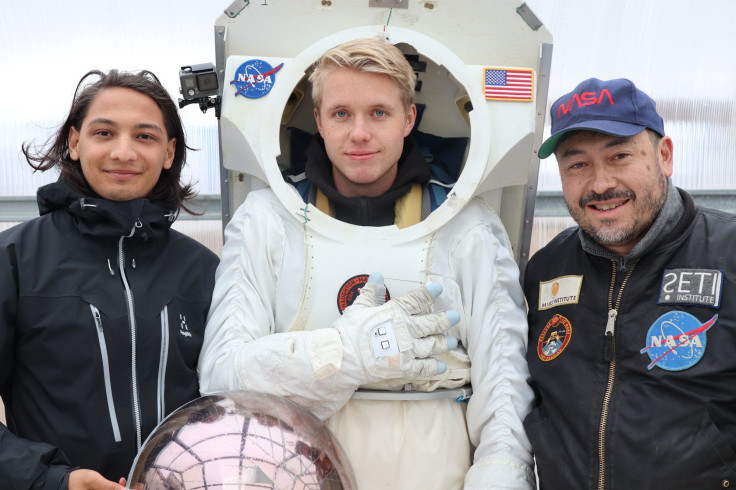Students Create Astronaut Gloves For Moon And Mars Missions

KEY POINTS
- Astronauts can have difficulties performing tasks because of the rigidity of space suits
- NTNU students created smart gloves for astronauts on Moon and Mars missions
- The smart gloves can detect even slight hand and finger movements, making it easier for the astronauts to perform delicate tasks
- The gloves recently passed testing at NASA Haughton-Mars Project
The NASA Haughton-Mars Project (HMP) recently conducted the successful testing of the smart gloves that students from the NTNU: Norwegian University of Science and Technology developed for astronauts on Mars or Moon missions.
The students’ start-up, Ntention, was founded in 2016 and now consists of just 13 NTNU students.
Smart Gloves For Space
NASA is planning to return to the Moon and then send astronauts to Mars through the Artemis program. Whether on the Moon or on Mars, the astronauts will have to operate in rather rigid spacesuits that could hinder their movements, and gloves are no exception to this dilemma. With resistance to hand and finger movements, tasks such as controlling robots or collecting samples become more difficult than they should be.
To solve the problem, the students behind Ntention created the “Astronaut Smart Glove” that uses a microcontroller to read different kinds of sensors that can capture even slight movements of the hands and fingers. The data is then wirelessly transferred to a device that can control other devices such as robots or drones.
“Our philosophy is to create technology that makes the human-machine interface intuitive and seamless,” NTNU student, Ntention co-founder and CEO Moina Medbøe Tamuly said. “With this glove, the astronaut can easily control a variety of robots, making research and exploration of other planets more efficient.”
Frank Øygard who works with product and development strategy at Ntention further notes that the technology they are developing are ones that let machines understand humans rather than having humans understand the machines.
“We call this the future interaction between humans and machines,” Øygard said.
Successful Field Testing
NASA HMP is a research facility located on the world's largest uninhabited island, Devon Island, which is often called “Mars on Earth" because of its harsh climate and Mars-like properties. For the last 23 years, NASA HMP has greatly contributed to advancements in space research, particularly when it comes to testing new technologies for space.
Only recently, after seven months of hard work, Ntention was finally able to bring the gloves to NASA HMP where their product successfully passed testing.
“Now, we're excited to see that our technology has potential applications for space exploration,” Tamuly said.
With only a few years before man sets foot on the Moon again, it's not impossible for the student-made smart gloves to be on its way to space.
© Copyright IBTimes 2025. All rights reserved.






















